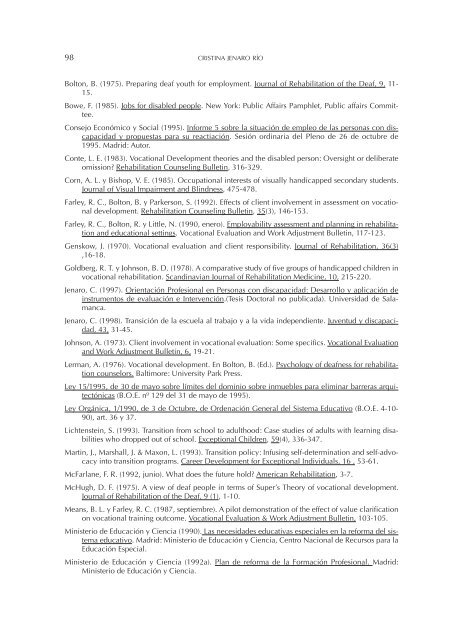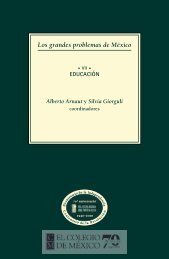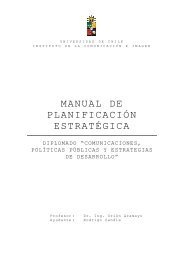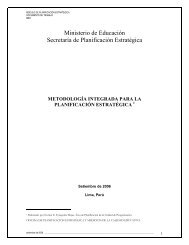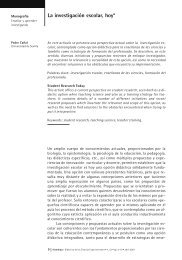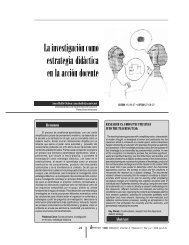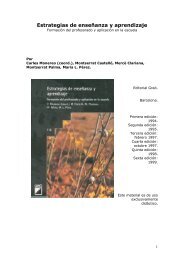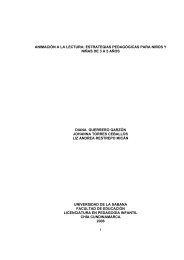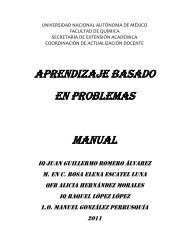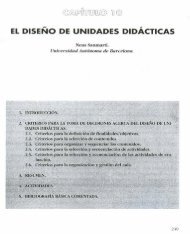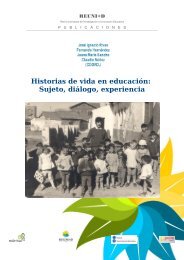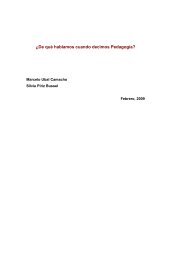Jl2Fhz
Jl2Fhz
Jl2Fhz
You also want an ePaper? Increase the reach of your titles
YUMPU automatically turns print PDFs into web optimized ePapers that Google loves.
98 CRISTINA JENARO RÍOBolton, B. (1975). Preparing deaf youth for employment. Journal of Rehabilitation of the Deaf, 9, 11-15.Bowe, F. (1985). Jobs for disabled people. New York: Public Affairs Pamphlet, Public affairs Committee.Consejo Económico y Social (1995). Informe 5 sobre la situación de empleo de las personas con discapacidady propuestas para su reactiación. Sesión ordinaria del Pleno de 26 de octubre de1995. Madrid: Autor.Conte, L. E. (1983). Vocational Development theories and the disabled person: Oversight or deliberateomission? Rehabilitation Counseling Bulletin, 316-329.Corn, A. L. y Bishop, V. E. (1985). Occupational interests of visually handicapped secondary students.Journal of Visual Impairment and Blindness, 475-478.Farley, R. C., Bolton, B. y Parkerson, S. (1992). Effects of client involvement in assessment on vocationaldevelopment. Rehabilitation Counseling Bulletin, 35(3), 146-153.Farley, R. C., Bolton, R. y Little, N. (1990, enero). Employability assessment and planning in rehabilitationand educational settings. Vocational Evaluation and Work Adjustment Bulletin, 117-123.Genskow, J. (1970). Vocational evaluation and client responsibility. Journal of Rehabilitation, 36(3),16-18.Goldberg, R. T. y Johnson, B. D. (1978). A comparative study of five groups of handicapped children invocational rehabilitation. Scandinavian Journal of Rehabilitation Medicine, 10, 215-220.Jenaro, C. (1997). Orientación Profesional en Personas con discapacidad: Desarrollo y aplicación deinstrumentos de evaluación e Intervención.(Tesis Doctoral no publicada). Universidad de Salamanca.Jenaro, C. (1998). Transición de la escuela al trabajo y a la vida independiente. Juventud y discapacidad,43, 31-45.Johnson, A. (1973). Client involvement in vocational evaluation: Some specifics. Vocational Evaluationand Work Adjustment Bulletin, 6, 19-21.Lerman, A. (1976). Vocational development. En Bolton, B. (Ed.). Psychology of deafness for rehabilitationcounselors. Baltimore: University Park Press.Ley 15/1995, de 30 de mayo sobre límites del dominio sobre inmuebles para eliminar barreras arquitectónicas(B.O.E. nº 129 del 31 de mayo de 1995).Ley Orgánica, 1/1990, de 3 de Octubre, de Ordenación General del Sistema Educativo (B.O.E. 4-10-90), art. 36 y 37.Lichtenstein, S. (1993). Transition from school to adulthood: Case studies of adults with learning disabilitieswho dropped out of school. Exceptional Children, 59(4), 336-347.Martin, J., Marshall, J. & Maxon, L. (1993). Transition policy: Infusing self-determination and self-advocacyinto transition programs. Career Development for Exceptional Individuals, 16 , 53-61.McFarlane, F. R. (1992, junio). What does the future hold? American Rehabilitation, 3-7.McHugh, D. F. (1975). A view of deaf people in terms of Super’s Theory of vocational development.Journal of Rehabilitation of the Deaf, 9 (1), 1-10.Means, B. L. y Farley, R. C. (1987, septiembre). A pilot demonstration of the effect of value clarificationon vocational training outcome. Vocational Evaluation & Work Adjustment Bulletin, 103-105.Ministerio de Educación y Ciencia (1990). Las necesidades educativas especiales en la reforma del sistemaeducativo. Madrid: Ministerio de Educación y Ciencia, Centro Nacional de Recursos para laEducación Especial.Ministerio de Educación y Ciencia (1992a). Plan de reforma de la Formación Profesional. Madrid:Ministerio de Educación y Ciencia.


